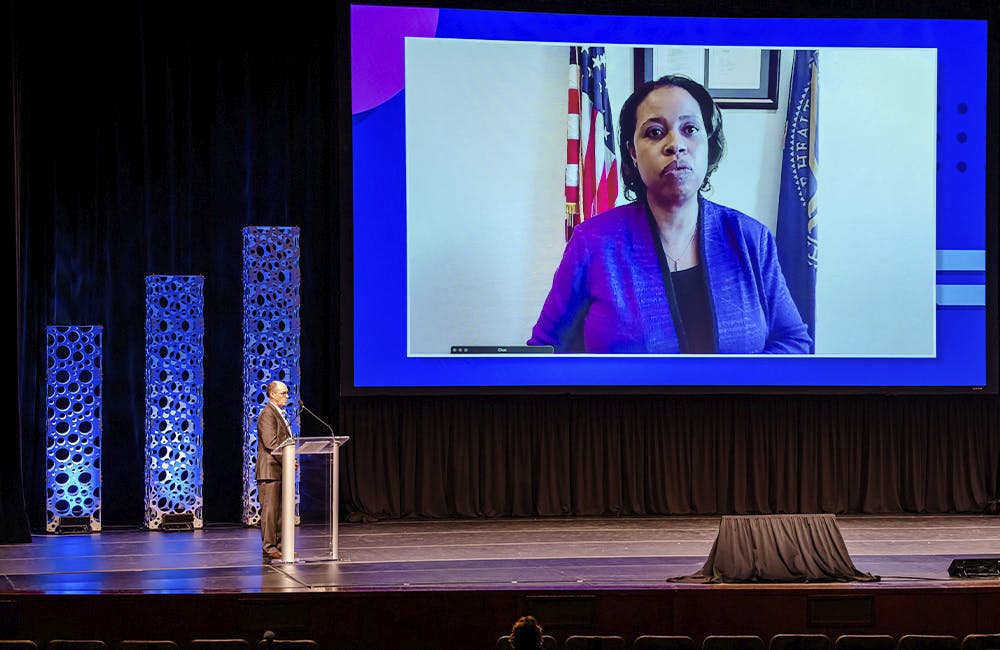CMS Administrator Teases New Interoperability Rule to Come

A new forthcoming interoperability rule from the Centers of Medicare and Medicaid Services (CMS) aims to further address payer-to-payer data exchange challenges with a requirement for a standards-based API. This effort, Administrator Chiquita Brooks-LaSure said, will also support a government-wide calling to address racial equity.
The CMS Interoperability and Patient Access Final Rule published in May 2020 ensured patients had access to health care data through personalized health apps, but there is still a long way to go to enable patients to make use of that data, Brooks-LaSure noted at the HIMSS conference in Orlando, Florida, Tuesday.
In December 2021, the agency decided not to take action on enforcing one provision of the rule against payers who do not meet the original deadline. The agency at the time cited concerns from payers about potential operational challenges and risks to data quality without any outlined specific data exchange requirements and standards, like a standards-based API.
“The interoperability rule wasn’t interoperable enough,” and it “left too many questions about how data should be exchanged,” she added at the HIMSS conference.
Now the agency will be working on a new rule incorporating these standards that will be released “soon,” Brooks-LaSure said, though she did not disclose a specific time frame.
The move is a necessary step that will ensure providers, patients and payers can seamlessly share data via standards that reflect health equity principles.
“The president has made it clear that we’re going to address racial equity with a whole-of-government approach,” she said. At CMS, this means taking a look at how it’s promoting health equity as “the first question, not the last.”
The statement echoes increased pushes for greater equity across not just the health care industry, but also government overall, following President Biden’s management agenda that calls for government to deliver better, equitable services.
Advancing health equity tops Brooks-LaSure’s list of six strategic pillars she set out in her first 100 days in her role.
Other efforts CMS is working on include a person-centered design approach around electronic prior authorization and taking a closer look in provider directories and CMS’ role in managing them.
This is a carousel with manually rotating slides. Use Next and Previous buttons to navigate or jump to a slide with the slide dots
-

DOD Has a New Cyber Resiliency Assessment Program
Defense officials tout the continuous assessment feature and scalability of the new program amid increased cyber threats.
5m read -

Transitioning Systems for Modern Agency Missions
IT modernization is a constant process necessary for improving customer service, mission delivery and collaboration.
40m watch -

Cyber Resilience and Recovery Amid Evolving Cyber Threats
Data durability is a key aspect of NIST’s cybersecurity framework for public and private organizations.
21m listen -

How Tech Enables Environmental Justice at EPA
The agency wants to eliminate bias and establish new tech standards to reduce greenhouse gas emissions.
39m listen








